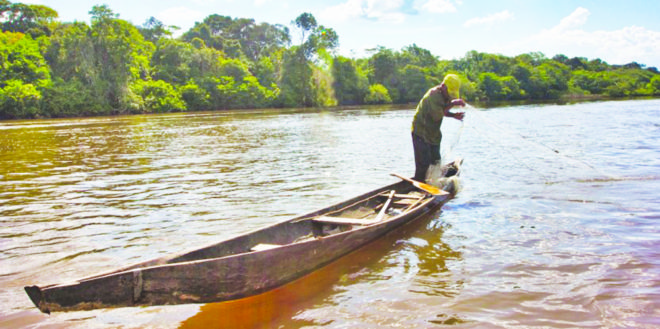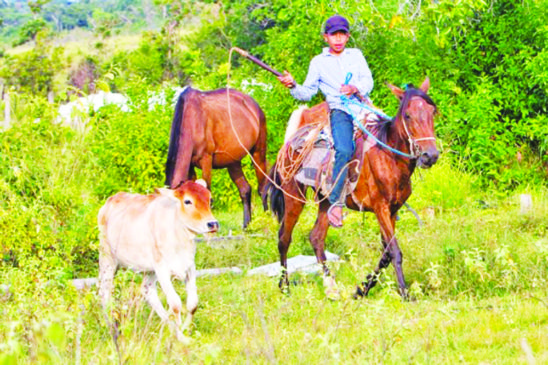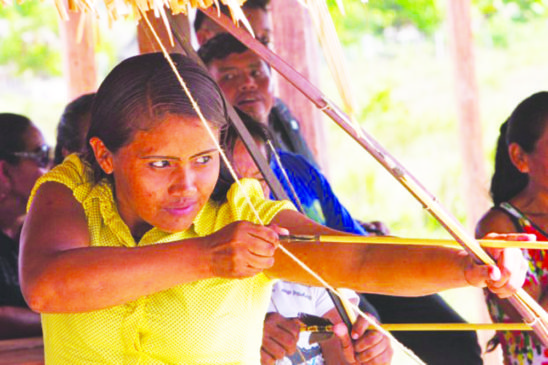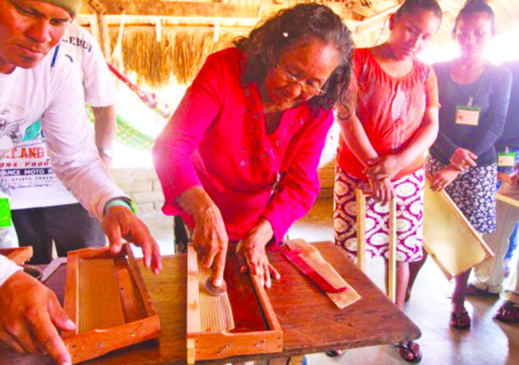

Tourism in Guyana’s southern Rupununi region has long been a small business aimed at foreign visitors. But growing demand for experiences that mix wildlife watching with cultural activities is creating opportunities of benefit to local communities.
Now a purring economic engine, the industry not only creates jobs in rural villages where employment opportunities are scarce, but it also provides incentives to protect birds and other animals that visitors will pay to see, such as giant otters, giant anteaters and jaguars.
“With the spread of community-based tourism and the increased interest internationally in experiential travel, it is as if the Rupununi has found its moment,” says Melanie McTurk, president of, an umbrella group of the region’s tourism enterprises.
After two or three decades of being told that no one would want what the Rupununi has to offer, she adds, “All of a sudden, it is exactly what everyone wants.”
In its work with communities involved in tourism, Visit Rupununi receives support from the Guyana branch of the Sustainable Wildlife Management (SWM) Programme, which is working to improve the conservation and sustainable use of wildlife in forest, savannah and wetland environments in 13 countries.
The Rupununi region offers a wide variety of ecosystems in a small area. The South — with its rolling grasslands, forested hills and woodland patches known as “bush islands” — is home to Amerindian communities as well as to descendants of ranchers who settled in the area several generations ago.
The North, which also features villages and ranches, is a sprawling wetland that floods annually, making travel difficult, but resulting in a remarkable diversity of aquatic life.
Distances and bad roads make travel expensive, and most tourists are foreigners interested in bird watching and wildlife. That is likely to change, however, as there are plans to improve the road network and pave the main highway from Georgetown, the capital on the Caribbean coast, to Lethem, on the Brazilian border in the Rupununi.
Greater access will bring both opportunities for local communities to become more involved in tourism and the risk of negative environmental impacts, McTurk says.
Nature, culture and sport
Tourism in the Rupununi began when landholding families launched “Ranches of the Rupununi,” which combined home stays with nature tourism. Their customers were mainly diplomats from Georgetown and, later, scientists who were doing research in the region.

The discovery of a previously unreported population of red siskins (Spinus cucullata), an endangered species, added to the region’s popularity with birdwatchers.
Over time, several Indigenous communities entered the market, often with the help of non-profit conservation groups.
Surama, in the North Rupununi sub-district, began courting tourists in the 1990s, but it took about a decade to start seeing the fruits of their labor, says Jacqueline Allicock, 49, who is the first woman to chair the North Rupununi District Development Board, an organization of community leaders, and who also represents her village on the board.
The village lacked a marketing plan, Allicock says. Residents also had mixed opinions about the idea, but the village leader at the time “had a vision of what tourism was about,” and gradually more people supported it, she says.
They were aided along the way by a business owner who helped them design packages for casual nature tourists, hard-core birdwatchers and visitors more interested in cultural activities.
Villagers now see the benefits of the enterprise, which employs some villagers directly, while others supply the kitchen with fresh fruits and vegetables, says Allicock, who is senior manager of the business. Some of the revenues are invested in the school, and some in community projects like road repair.
The village of Rewa took a different tack, catering to sport fishermen seeking the arapaima, a giant, air-breathing fish found in the Amazon. The tourist cabins and open-air dining room are a short distance from the main part of the village, and jobs rotate among residents.
Karanambu Ranch, established in 1927, began its tourism efforts as part of “Ranches of the Rupununi,” but the owners also established a conservation trust, focusing especially on giant otters, which were hunted for their pelts in the 1960s and 1970s.
“The ranch, tourism and conservation are intermixed,” says McTurk, who manages the ranch with her husband.
They work with communities in the area, purchasing food and other items from them, including honey. In mid-September, the ranch hosted a beekeeping workshop, inviting about a dozen people from surrounding villages to learn to build and maintain their own beehives.
By managing bees in hives, villagers can increase their income from honey production while reducing the risk of wildfires, McTurk says.
Changes are on the horizon in Guyana, as offshore oil production set to begin in early 2020 is expected to triple the country’s gross domestic product. Some of those revenues are likely to be used to upgrade infrastructure.

Local leaders caution that road construction or improvement in the Rupununi must be planned carefully so as not to damage ecosystems and wildlife habitat or disrupt annual flooding and fish spawning.
The Sustainable Wildlife Programme is funded by the European Union and implemented by the Center for International Forestry Research (CIFOR), the United Nations Food and Agriculture Organization (FAO), the French Agricultural Research Centre for International Development (CIRAD) and the Wildlife Conservation Society (WCS). (Excerpt from Center for International Forestry Research (CIFOR) – Forest News)



